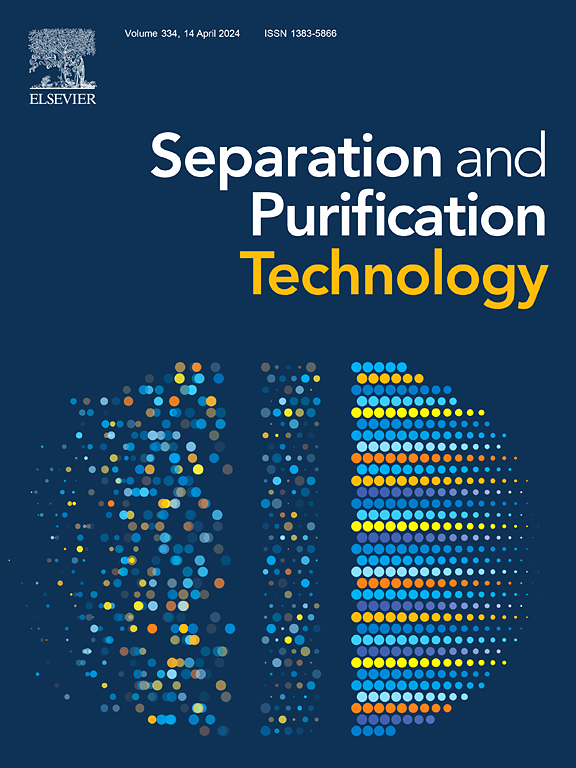Simultaneous removal of aniline and Sb(V) from wastewater in an integrated electrocoagulation and electro-Fenton system
IF 8.1
1区 工程技术
Q1 ENGINEERING, CHEMICAL
引用次数: 0
Abstract
Heavy metal–organic compound complexes are commonly found in textile dye wastewater, seriously threatening human health. This work proposes a unique integrated electrocoagulation and electro-Fenton (EC-EF) system combining an Fe anode and a carbon-felt-loaded hydroxylated carbon nanotubes (CNTs-OH/CF) cathode for the simultaneous removal of aniline and Sb(V) from wastewater. Under optimal conditions of initial pH of 3.0, NaCl concentration of 0.15 mol/L, and current density of 30 A m−2, the EC-EF system removed almost 100 % of aniline in 40 min and of Sb(V) in 10 min, with an energy consumption equal to 2.01 KWh kg−1. The excellent performance derived from the usage of the CNTs-OH/CF cathode increased the number of active sites, hydrophobicity, and electrical conductivity, facilitating the oxygen reduction reaction and electron transfer, thus enhancing the in situ-produced hydrogen peroxide (H2O2) with a concentration of 644.53 mg L−1, exceeding most reported values. Furthermore, hydroxyl radicals (•OH), the dominant active species generated through the reactions of Fe2+ with electro generated H2O2, promoted the degradation of aniline. Meanwhile, Sb(V) was adsorbed by the ferric hydroxide formed at the anode and finally co-precipitated. The excellent reusability after five cycles and outstanding catalytic activity towards real wastewater demonstrate the superiority of the developed system for treating wastewater in practical applications. This study presents a unique integrated technology and a theoretical foundation for the simultaneous removal of heavy metal–organic compound complexes from wastewater.


求助全文
约1分钟内获得全文
求助全文
来源期刊

Separation and Purification Technology
工程技术-工程:化工
CiteScore
14.00
自引率
12.80%
发文量
2347
审稿时长
43 days
期刊介绍:
Separation and Purification Technology is a premier journal committed to sharing innovative methods for separation and purification in chemical and environmental engineering, encompassing both homogeneous solutions and heterogeneous mixtures. Our scope includes the separation and/or purification of liquids, vapors, and gases, as well as carbon capture and separation techniques. However, it's important to note that methods solely intended for analytical purposes are not within the scope of the journal. Additionally, disciplines such as soil science, polymer science, and metallurgy fall outside the purview of Separation and Purification Technology. Join us in advancing the field of separation and purification methods for sustainable solutions in chemical and environmental engineering.
 求助内容:
求助内容: 应助结果提醒方式:
应助结果提醒方式:


